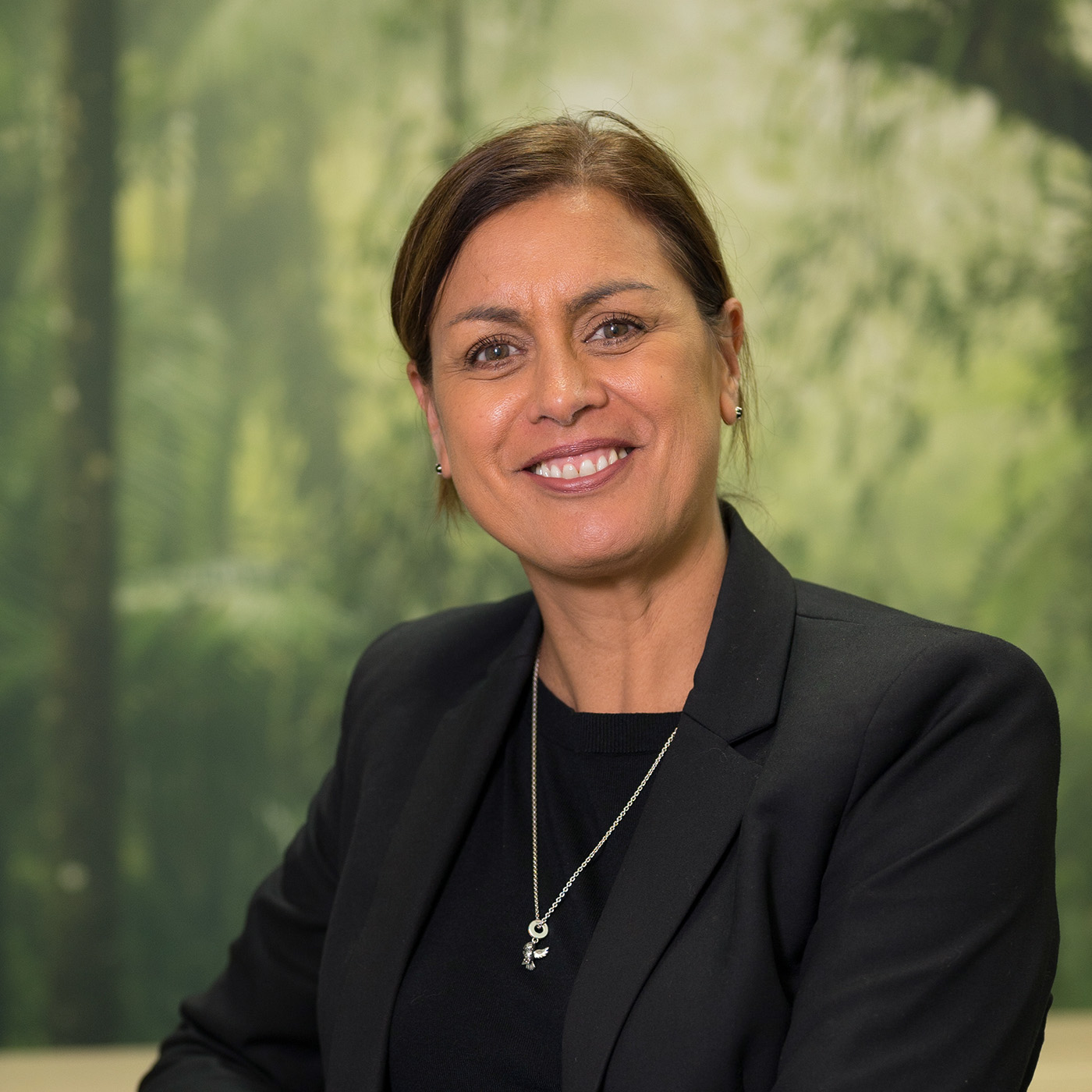Feature
InBrief
Cancer inequities
With Māori much more likely to die from lung cancer than non-Māori, University of Otago researchers are working across a range of disciplines to change that.
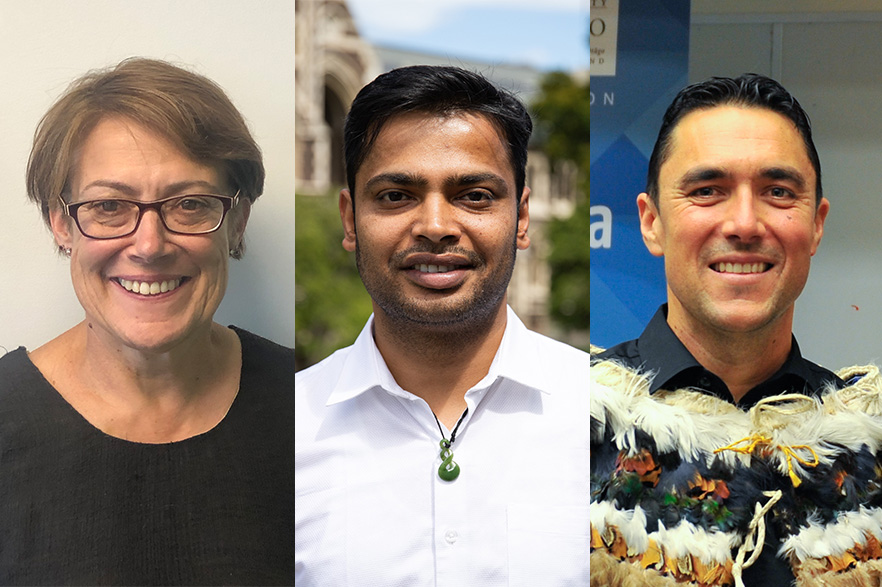
Professor Sue Crengle, Associate Professor Aniruddha Chatterjee, and Dr Jason Gurney
“Māori are about three times more likely to be diagnosed with lung cancer and the mortality inequities are even higher.”
Using $6.2 million in equitable cancer outcomes research funding from the Health Research Council (HRC), Te Aho o Te Kahu, the Cancer Control Agency and the Ministry of Health, the Otago group is looking to understand the mechanisms behind these inequities, as well as develop screening programmes and a groundbreaking molecular test to improve outcomes.
Otago senior Māori health researcher Professor Sue Crengle (Kāi Tahu, Kāti Māmoe, Waitaha) has received $1.9 million to work alongside the Waitematā and Auckland DHBs to develop and test a lung cancer screening programme using low dose CT scans.
"Māori are about three times more likely to be diagnosed with lung cancer and the mortality inequities are even higher," says Crengle.
Survival rates are also low, partly because lung cancer is often diagnosed when it's quite late, reducing treatment options.
"Using a CT scan allows us to identify more cancers and potential cancers than using chest x-rays. We know from international research that screening with low dose CT scans reduces lung cancer mortality by 20-26 per cent."
They will test the risk prediction algorithm used in lung cancer screening to ensure that it performs well in the New Zealand context.
At the same time, Associate Professor Aniruddha Chatterjee (Pathology) and his colleagues have received $1.2 million to develop a blood test-based screening tool to make early detection of lung cancer more widely available, improving equity and outcomes.
Chatterjee says the test uses what is known as DNA methylation or epigenetics.
"It is the instruction manual, if you like, to our DNA, telling it how it will function. Broadly speaking, in a cancer cell those instructions go wrong."
When someone has cancer, those cells shed DNA into the blood and his team is developing techniques to analyse the DNA methylation found in the blood, to detect changes that indicate tumour DNA.
"A big advantage is that we can collect blood in a specialised tube that is suitable for long-term storage. This would be really helpful in remote rural communities where access to specialised services is more difficult."
Meanwhile, Māori epidemiologist Associate Professor Jason Gurney (Ngāpuhi) from the University of Otago, Wellington, and his team are wanting to understand why Māori are around 30 per cent more likely to die from lung cancer.
"Just over 300 Māori die each year of lung cancer – about the same as the next six cancers combined – making it by far the most common cause of cancer death.
"It's an enormous issue and the bad news is that the inequity of survival between Māori and non-Māori basically hasn't shifted in two to three decades."
Gurney and his team have received $800,000 to examine these differences, looking right across the cancer spectrum, from diagnosis to treatments such as surgery and radiation therapy.
“We want to understand where the most important disparities in care access are happening, to inform actions that dismantle these disparities.”
Bringing back hope
Dr Wiebke Finkler (Marketing) is breaking the “doom and gloom” narrative around climate change and sustainability and bringing hope back into conversations about our world.
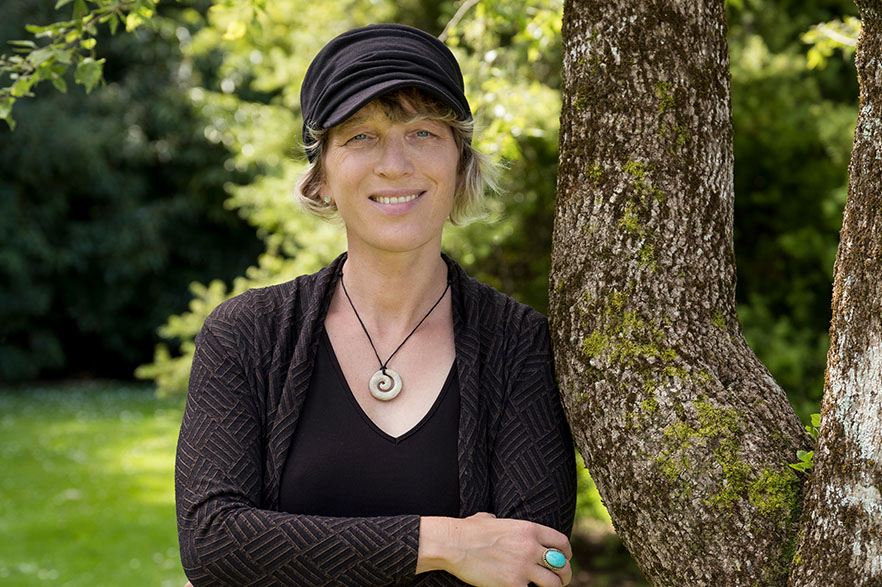
Dr Wiebke Finkler: “While we need to acknowledge problems exist, we need to offer something that is applied and brings people together rather than paralysing them by thinking they can't do anything to help.”
Her book The Science of Hope, published late last year, offers an empowering story of hope – showing the positive impact of conservation efforts and humans' desire to connect with animals, alongside stunning images by leading wildlife photographers.
A finalist in the Ecology and Environment category of the Foreword INDIES Book Awards, and featured in the Scholastic Book Club catalogue, Finkler says she wanted to inspire children, teachers and everyday people by offering practical solutions and strategies for positive change.
“While we need to acknowledge problems exist, we need to offer something that is applied and brings people together rather than paralysing them by thinking they can't do anything to help,” she says.
“We can learn from other people's stories and be inspired to find practical solutions. They may not be 'perfect solutions' from a scientific perspective but they are doable.”
Finkler, who is also a marine biologist, filmmaker and science communicator based in the Department of Marketing, has also established the Visual Research Lab, focused on creative marketing for positive change. The lab has three main research areas – visual campaigns for positive social, sustainable and conservation change; storytelling using 360° video, music and ambisonic sound; and science marketing.
“I'm particularly interested in how we use video and other visual campaigns to bring about social change. We have various PhD projects on the go, including one about keeping dogs on leads to protect sealions and penguins.”
Examining ageing
A University of Otago, Christchurch, researcher is one step closer to unlocking the secrets of the ageing process after being awarded a Te Pūtea Rangahau Marsden Fund Grant.
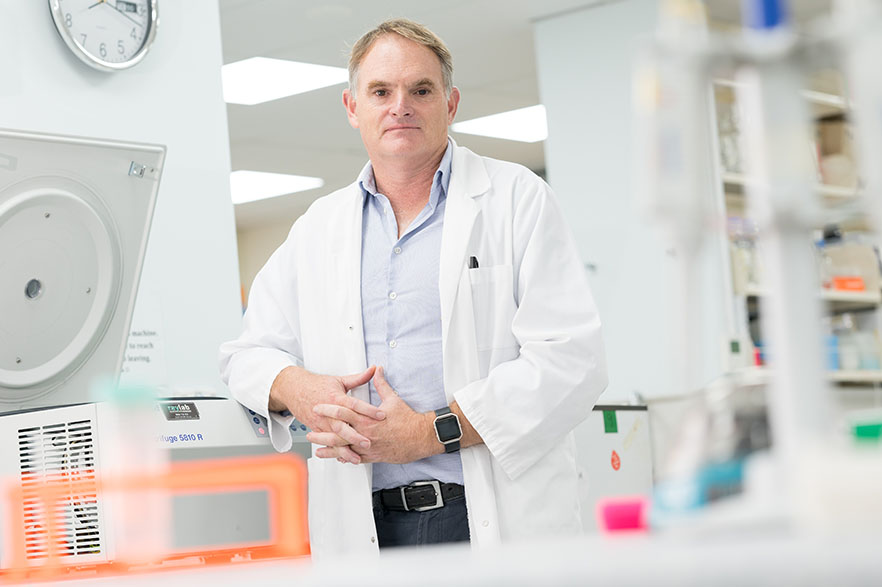
Professor Mark Hampton: “Ageing is a major risk factor for many human diseases, but there is limited information on what is happening inside our cells as we begin to age.”
Photo: Neil Macbeth
Professor Mark Hampton (Pathology and Biomedical Science) and his team will use the funding to investigate what happens in cells as people age – in particular the red blood cells responsible for transporting oxygen around the body.
“Ageing is a major risk factor for many human diseases, but there is limited information on what is happening inside our cells as we begin to age,” says Hampton.
“Some of the oxygen red blood cells carry is converted into hydrogen peroxide, which places these cells under oxidative stress. We've observed significant variation in how quickly red blood cells from different people recover after being challenged with hydrogen peroxide. The preliminary data also hints at an association between the speed of response and a person's age.”
Hampton and his team, including Associate Professor Liz Ledgerwood (Biochemistry), hope to reveal the critical factors that determine how quickly red blood cells respond to stress, and why this differs from person to person.
“The response is possibly related to the health of the stem cells that make billions of new red blood cells each day. Stem cells replenish all the different cells in our body, therefore red blood cells might be providing a window on what is happening in other less accessible parts of our body as we age.”
Volcano scientist supports community with knowledge
In January this year, the Kingdom of Tonga's Hunga-Tonga-Hunga-Ha'apai volcano erupted, generating an ash plume and tsunami that together had a devastating impact on Tonga's coastal communities.
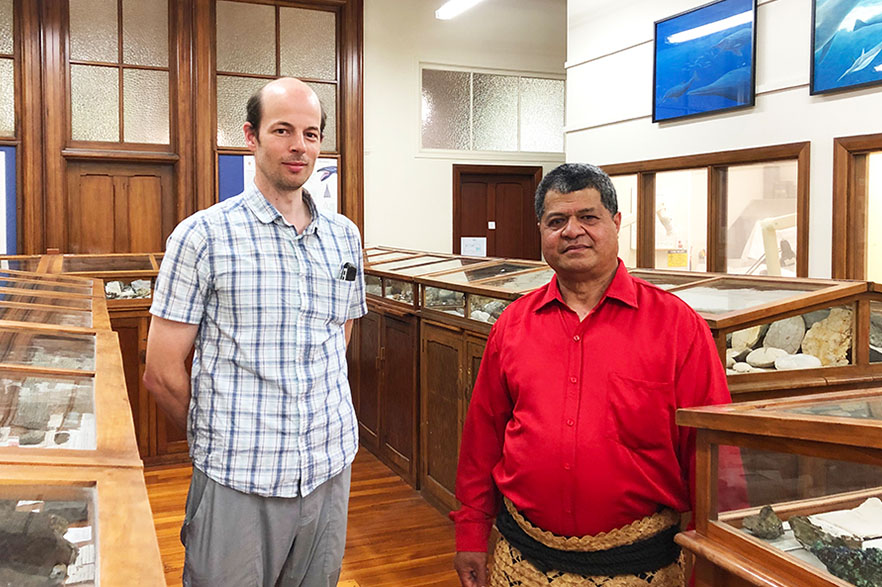
Dr Marco Brenna with the president of Dunedin's Tongan community, Palanite Taungapeau: “The more we learn about this eruption, the more it shows itself as extraordinary, and it is by pure luck and good fortune that the casualty count was that low.”
Dr Marco Brenna (Geology) was a post-doctoral researcher when he visited the volcano in 2015 with Professor Shane Cronin from the University of Auckland.
The visit followed a period of volcanic activity resulting in the creation of a new volcanic cone connecting the two pre-existing islands of Hunga-Tonga and Hunga-Ha'apai, and was the first access by researchers to study the volcano's geology.
The team spent five days undertaking fieldwork which, among other outputs, illustrated the evolutionary growth of the volcano from a lava cone to post-caldera activity over the last >2000 years.
Following the January 2022 eruption, Dr Brenna was a key spokesperson for local and international media, and he also met with Dunedin's Tongan Community to share his research and knowledge of the volcano to help them better understand the science of the volcanic activity and its impacts.
Dr Brenna continues to be involved with ongoing research from the recent eruption alongside Professor Cronin who has obtained ash for analysis. By looking at shape and composition of the ash, the researchers are able to interpret the mechanisms of the eruption, from the deeper magmatic drivers to the shallower explosive processes.
“The more we learn about this eruption, the more it shows itself as extraordinary, and it is by pure luck and good fortune that the casualty count was that low.”
A brand a minute
Children are exposed to a 'brand a minute' is one of the stark takeaways from research led by Associate Professor Leah Watkins (Marketing).
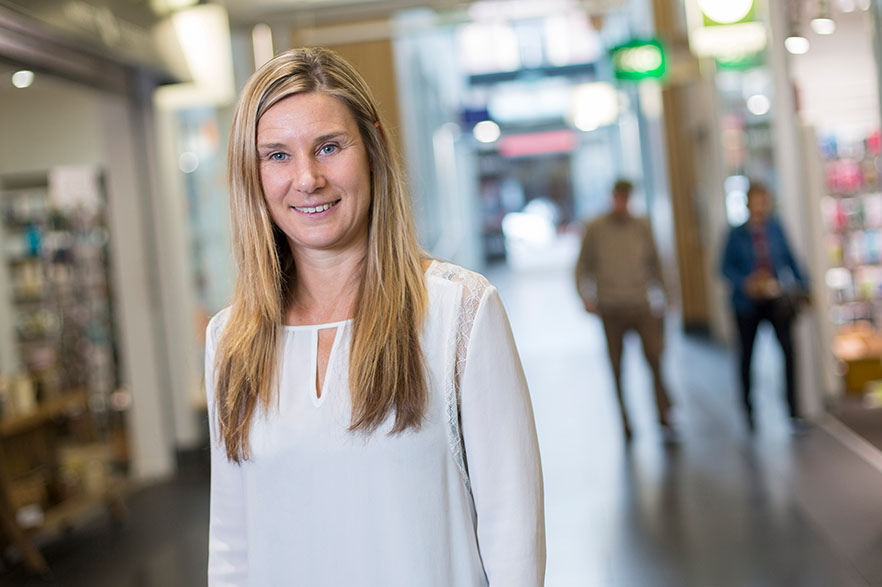
Associate Professor Leah Watkins: “…regardless of what products they were seeing, the concern was just how pervasive marketing messaging is in their environment.”
Drawing on data generated by a Public Health, Wellington, designed study in which 90 children aged 11–13 wore cameras for two days, Watkins' team found children were exposed to 554 brands over a 10-hour day, ranging from brand labels and product packaging to signage.
"One of the things that really surprised us was the sheer amount they are seeing,” says Watkins.
"We know marketing messages normalise pro-consumption values and ideas, such as being able to meet our needs for friendship and belonging through consumption. So, regardless of what products they were seeing, the concern was just how pervasive marketing messaging is in their environment."
Children also saw far more unhealthy marketing, compared to pro-social and healthy food messages.
The United Nations and WHO-UNICEF-Lancet Commission have made calls for marketing-free spaces for children and to ensure more pro-social messaging to counteract pro-consumption messaging. Watkins hopes the study's objective picture of children's marketing environment will stimulate important discussion about policies needed to achieve this for the next generation.
She says children actually saw the most advertising in school (43 per cent), so they will delve into that in a follow-up study.
More commercialisation is creeping into New Zealand schools through programmes that come with free branded merchandise, she says, with many lower decile schools reliant on offers from commercial entities to provide resources or deliver programmes.
Donation supports bipolar research
A project led by a team at the University of Otago, Christchurch, has been chosen as the recipient of a generous family donation to support research into bipolar disorder – a lifelong mental illness affecting one in 20 New Zealanders, marked by depressive and manic episodes.
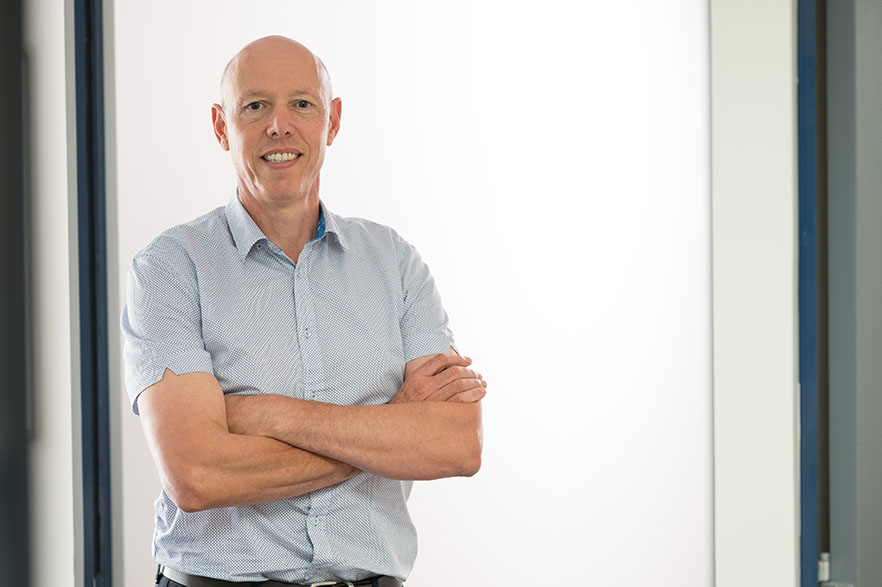
Professor Richard Porter: “This donation will give our unit, including researchers and staff on campus and from the CDHB's Specialist Mental Health Service, the ability to continue our ongoing work into this extremely challenging and important area.”
Photo: Neil Macbeth
Professor Richard Porter and his team at Christchurch's Department of Psychological Medicine, will receive $100,000 annually over five years from the newly-established Sue Bradford Memorial Fund.
The generous fund has been set up through the Māia Health Foundation by Christchurch resident Ian Bradford and family, in memory of their late wife and mother Sue, who suffered from bipolar disorder for several decades.
“This donation will give our unit, including researchers and staff on campus and from the CDHB's Specialist Mental Health Service, the ability to continue our ongoing work into this extremely challenging and important area, which has the potential to relieve suffering for so many battling this long-term and debilitating illness,” says Porter.
The team's work focuses on developing new, practical, psychological therapies to be administered alongside medications to improve mood stability, cognitive and general functioning.
They also plan to further examine the long-term cognitive impairments which mood disorders often cause, such as difficulties in memory and planning, and expand research into helping patients regulate their circadian rhythms.
The Bradford family's vision is for their $500,000 gift to act as a catalyst for others to donate to the Fund, to enable continuing research and support for patients with bipolar disorder and their families.
Māori views on vaccination
University of Otago postgraduate student Grace Davies (Ngāti Toarangatira, Ngāti Raukawa, Ngāti Koata) has been awarded a Health Research Council scholarship to investigate Māori attitudes towards vaccination.
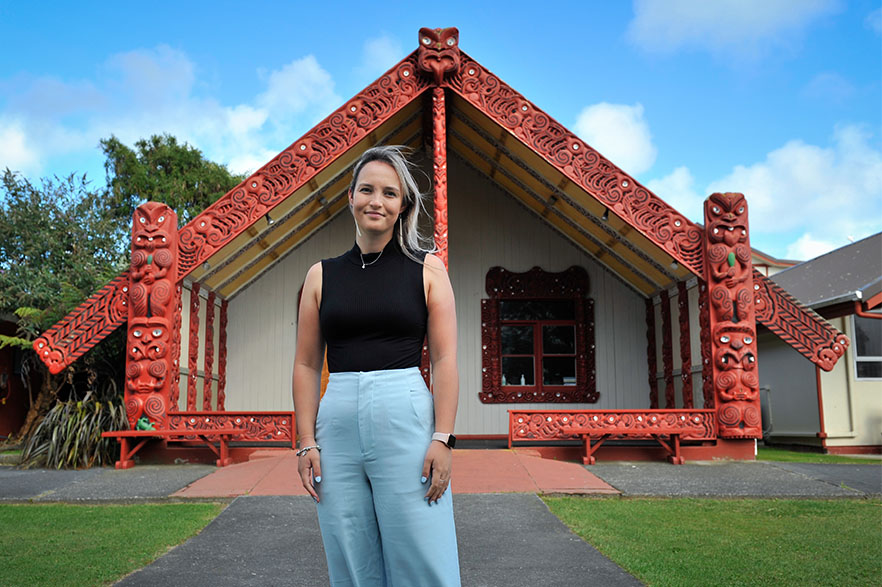
Grace Davies: “I came to realise early on in the vaccination rollout that our people, particularly Māori living in Māori communities, had different ways of thinking towards vaccination.”
Photo: Luke Pilkinton-Ching
She decided on her Master's research topic while working on the COVID-19 vaccination programme with iwi health provider Ora Toa and as the Capital and Coast District Health Board's Youth Lead on the COVID-19 response.
“I came to realise early on in the vaccination rollout that our people, particularly Māori living in Māori communities, had different ways of thinking towards vaccination,” she explains.
“When I was trying to get the kaumātua vaccinated for COVID-19, I often needed to sit down and understand their thoughts about the vaccine. That led me to think if we could study this in different age groups, we could learn more about Māori attitudes towards immunisation, and use that as a stepping stone to understand their needs for immunisation programmes in the future.”
She says while many kaumātua had experienced epidemics before and knew that getting vaccinated was the right thing to do, some of the younger people had been influenced by social media and anti-vax activity and were mistrustful of the immunisation programme.
Davies will research the attitudes of Māori living in the Takapūwāhia Pa community in Porirua, Wellington, where she grew up and now lives.
She says it's a huge privilege to be able to do research in her own community.
“I see the research as a way of getting their views into the academic world, as well as helping with health outcomes.”

